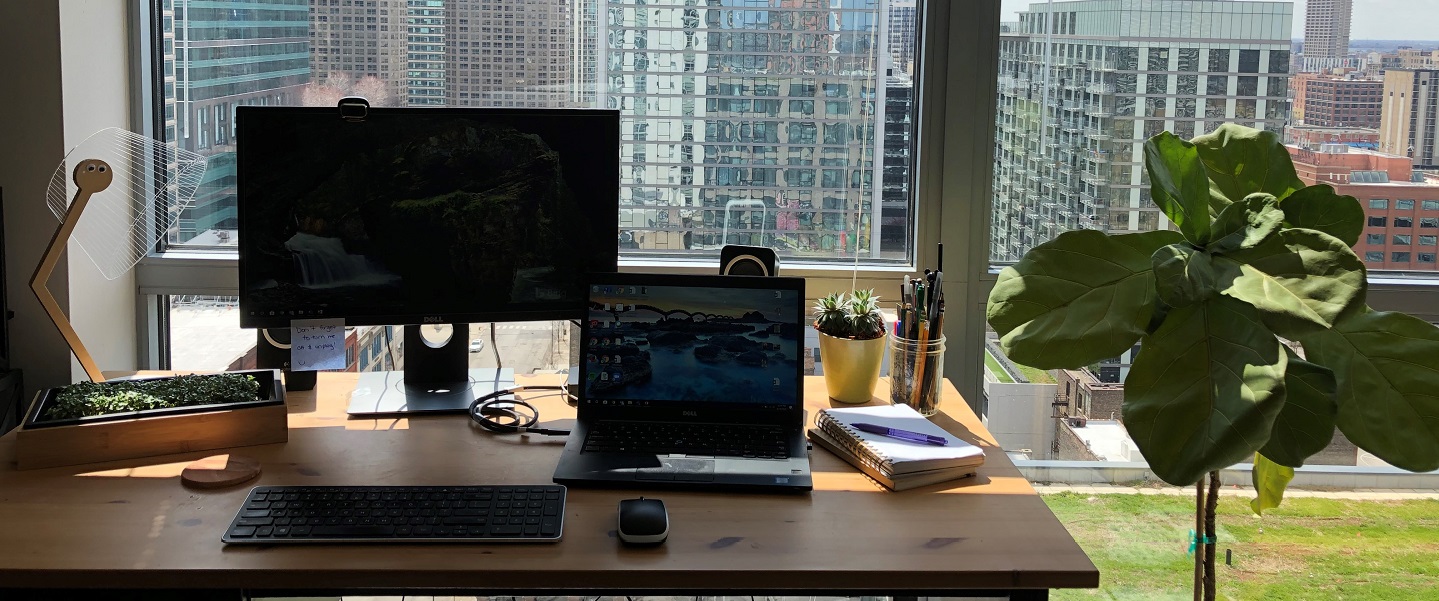
How to Make Your Home More Sustainable
April 10, 2020
Use what you have and get creative
Spring is the perfect time, now more than ever, to take inventory of the items we currently have and find creative ways to use or upcycle them. By reusing, repurposing, or getting creative with your items, you can keep them out of the landfill, eliminate the packaging waste from buying new items, and reduce the greenhouse gas emissions generated through making and transporting the product. This can be done with office supplies, food, furniture, really anything!Ways to put it into practice:
- To help reduce food waste, dive into your pantry and take stock of everything you own. If you don’t have an ingredient or have a random assortment of ingredients, get creative! There are many resources to help find easy recipes with what you have in your fridge like My Fridge Food, SuperCook, Allrecipes Dinner Spinner, or BigOven.
- Save your food scraps and repurpose them into something delicious! There are lots of great zero-waste food blogs to get inspiration for those shrimp shells, cilantro stems, or kale stems! Here are a few to check out first, Trash is for Tossers, Treading my Own Path, Going Zero Waste or the Zero-Waste Chef.
- Make a DIY project by upcycling your current items into something new to love. Get some inspiration from this article featuring 185 upcycling ideas. If you make an upcycled DIY project, share it with us on the Earth Month Gallery!
Make the sustainable choice your default
We make thousands of decisions and actions each day and we are aware of only a fraction of them. How many times do you make a decision about what to eat? Research by Cornell University suggests that we make on average 226.7 decisions on food alone per day– and when asked, people underestimated the number of decisions they made by 221. A simple, cost free way to make our homes more sustainable is to reduce the number of conscious decisions we need to make throughout our day, by setting up our homes to be more sustainable automatically. This helps reduce decision fatigue and any eco-anxiety you may experience when trying to figure out what the “right” choice is in the moment.Ways to put it into practice:
- Always forget to turn off your lights or tv before you fall asleep binge-watching The Office for the 100th time? Plug your lights and entertainment center into a smart powerstrip with a timer to automatically turn them off at a certain time. Explore additional options and how they work here.
- Set the default temperature on your thermostat just 2 degrees warmer in the summer and 2 degrees cooler in the winter. Even this tiny change will reduce your energy consumption and your contribution to greenhouse gases. Want to take it a step further? Install a programmable thermostat that adjusts the temperature based on your schedule. This can save up to 5-15% on your yearly energy costs and usage.
- Make your home office more sustainable by setting your computers and monitors to power saving settings. See more guidance on environmentally friendly energy settings and computing from NUIT.
- Try out weekly meal planning or automated grocery delivery. By meal planning, you limit the food you buy to what you need and have a list of healthy, sustainable meal options easily accessible. This can reduce waste from impulse takeout runs and food waste. If you want to automate your meal planning, there are a lot of great services and nutritionists you can work with to help! Staff and faculty can sign up for free one-on-one appointments with a nutritionist through the YourLife Program.
- When you do need to buy new electronics, look for the ENERGY STAR® logo which identifies the more energy efficient items.
Bring the outdoors in
Earth Month is a great time to appreciate the outdoors, even when we are spending more time inside. Bringing the outdoors into our homes can dramatically improve our health and wellness. This doesn’t mean you should let in all the Chicagoland wildlife you may see on our Citizen Science Project Spotlights! Instead, think about easy ways to make your home more integrated with the outdoors – through daylighting, heating or cooling, and plants! Many of these practices improve our mood, lessen fatigue, reduce eyestrain, reduce stress, and improve creativity and focus (Boubekri, et al 2014, and Bringslimark et al 2009).Ways to put it into practice:
- Set up your workspaces next to windows. Daylighting is the term for lighting a space by natural light. Getting natural light not only improves your mood and helps you get a good night sleep, it also reduces your electricity use! So let the light shine in!
- Add some plants to your workspace, consider houseplants or herbs or microgreens! Need some tips? Learn how to repot a plant with Northwestern’s Associate Director of Sustainability Julie Cahillane. Also, the Plant Chicago is hosting a variety of virtual workshops on container gardening, growing microgreens, and more.
- In these spring time months, the weather can be really variable, beautiful and 70 degrees one day and 40s the next. Try heating and cooling your house naturally by opening and closing your windows to make a cross breeze. This can save a lot of energy and brighten your mood with some fresh air!
Happy Earth Month!